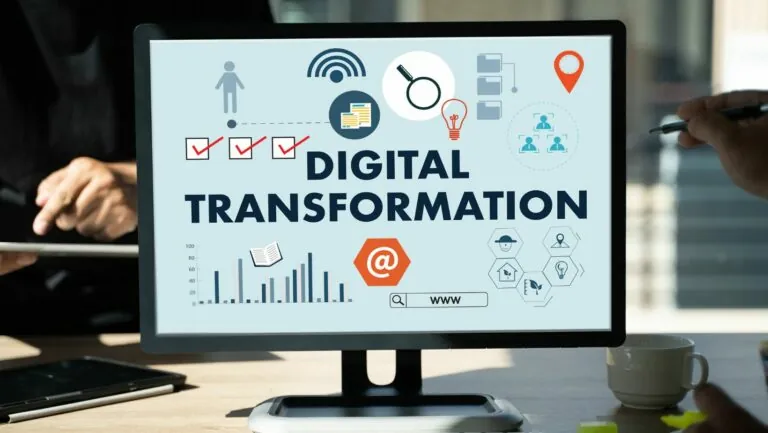Table of Contents
ToggleIn a world where the only constant is change, technology has become the ultimate game-changer in how people work and conduct business. Picture this: just a few decades ago, the idea of working remotely was as far-fetched as a flying car. Now, thanks to advances in technology, employees can trade their office cubicles for cozy couches and still get the job done. Who knew pajamas could be the new power suit?
Overview of Technological Advances
Technological advances continue to redefine workplace dynamics. Innovations like cloud computing have enabled seamless data access and collaboration from anywhere. Remote work tools, such as video conferencing platforms, facilitate real-time communication among dispersed teams.
Automation technologies perform repetitive tasks, allowing employees to focus on higher-level functions. Artificial intelligence assists in data analysis, improving decision-making with insights drawn from vast datasets. Businesses leverage machine learning algorithms to predict customer behaviors, driving sales strategies.
Mobile devices play a crucial role in enhancing productivity. Employees can communicate and access necessary resources on-the-go, fostering flexibility in workflows. E-commerce platforms have transformed traditional business models, enabling companies to reach global markets effortlessly.
Cybersecurity advancements safeguard sensitive business information. Stronger encryption and multi-factor authentication protect against unauthorized access. As more businesses adopt digital solutions, prioritizing cybersecurity measures becomes essential to building consumer trust.
Data analytics platforms empower organizations to understand market trends and customer preferences. Companies can make data-driven decisions that align with consumer demands. Emerging technologies, such as blockchain, offer transparency and security in transactions, appealing to an increasingly digital clientele.
Incorporating these technological advances not only optimizes operations but also enhances user experiences. Businesses that embrace innovation maintain competitiveness in rapidly evolving markets. Organizations that invest in technology cultivate adaptive workplaces, positioned for future challenges.
Impact of Technology on the Workplace
Technology significantly reshapes workplace dynamics. Enhanced communication tools and remote work innovations stand at the forefront of this transformation.
Enhanced Communication Tools
Video conferencing platforms transform how teams connect. Tools like Zoom and Microsoft Teams facilitate real-time discussions, which fosters collaboration among remote employees. Instant messaging solutions like Slack and Microsoft Teams streamline daily interactions. They promote quick exchanges, reducing email overload. Screen-sharing capabilities enhance presentations and brainstorming sessions. Visual aids improve understanding and engagement during meetings. Such tools cultivate an inclusive environment, ensuring even distant team members feel connected. Overall, these advancements simplify communication and promote efficient teamwork.
Remote Work Innovations
Remote work innovations redefine traditional workplace structures. Asynchronous communication methods, such as project management software, allow flexibility in task assignments. Employees access essential files and collaborate from anywhere via cloud storage solutions like Google Drive. Remote desktop applications enable seamless access to office computers, preserving productivity. Additionally, virtual reality tools enhance team bonding through immersive experiences. Some organizations even implement flexible work hours, catering to employees’ needs. Remote work innovations create adaptive environments that prioritize work-life balance, promoting overall employee satisfaction and well-being.
Changes in Business Operations
Technology continuously changes business operations. Automation plays a significant role in enhancing efficiency across various industries.
Automation and Efficiency
Robotic process automation software handles repetitive tasks, freeing employees for complex responsibilities. Increased productivity results from reduced manual effort and faster task completion. Many companies utilize automated workflows to streamline operations, improve accuracy, and minimize human error. Business processes like invoicing, payroll, and customer service benefit greatly from these innovations. By implementing automation tools, organizations can allocate resources more effectively and focus on strategic growth initiatives.
Data-Driven Decision Making
Data analytics transforms how organizations approach decision-making. Access to real-time data allows businesses to identify trends, consumer preferences, and market shifts quickly. Companies rely on data visualization tools to present insights clearly and drive informed strategies. Machine learning algorithms analyze vast datasets, uncovering patterns that guide future initiatives. Improved decision-making leads to better resource allocation and enhances overall performance. As a result, businesses leverage data to anticipate customer needs and stay competitive in dynamic markets.
Future Trends in Technology
Technology continues to evolve, influencing how businesses operate and individuals work. Two significant trends shaping the future are artificial intelligence and blockchain.
Artificial Intelligence in Business
Artificial intelligence (AI) streamlines myriad business operations. Companies utilize machine learning algorithms to analyze patterns, improving decision-making. Automation of repetitive tasks increases productivity by enabling employees to engage in higher-level work. AI-driven tools enhance customer service by offering personalized experiences, fostering client loyalty. Furthermore, data-driven insights from AI allow businesses to optimize marketing strategies effectively, enhancing audience targeting. Such advancements empower organizations to stay competitive in rapidly changing markets.
The Role of Blockchain
Blockchain technology ensures secure transactions in various sectors. It provides transparency and traceability, which is vital for industries like finance and supply chain management. Many companies adopt blockchain to enhance data security, minimizing risks of fraud and unauthorized access. Smart contracts on blockchain simplify complex agreements by automating execution, increasing operational efficiency. Additional benefits include reduced transaction costs and faster transfers, which are crucial for global operations. Such innovations position blockchain as a transformative force in business practices.
Conclusion
The rapid evolution of technology is reshaping the workplace landscape in unprecedented ways. As businesses adapt to these changes they find new opportunities to enhance productivity and streamline operations. The integration of innovative tools and practices not only fosters collaboration but also creates a more flexible work environment.
Embracing these advances is essential for organizations aiming to remain competitive. By leveraging automation artificial intelligence and data analytics companies can optimize their processes and better meet customer needs. As technology continues to advance the future of work promises to be dynamic and full of potential for those ready to embrace the change.






